Hamsters are so adorable that it’s almost impossible to imagine them eating other animals. The fact is, hamsters are omnivores – they eat plants as well as meat. As horrific as it sounds, hamsters are even known to eat their own young. Yikes!
So, yes, hamsters can eat meat – as long as they do so in moderation.
But what kind of meat (aside from baby hamster flesh) can hamsters eat? Is meat even good for them?
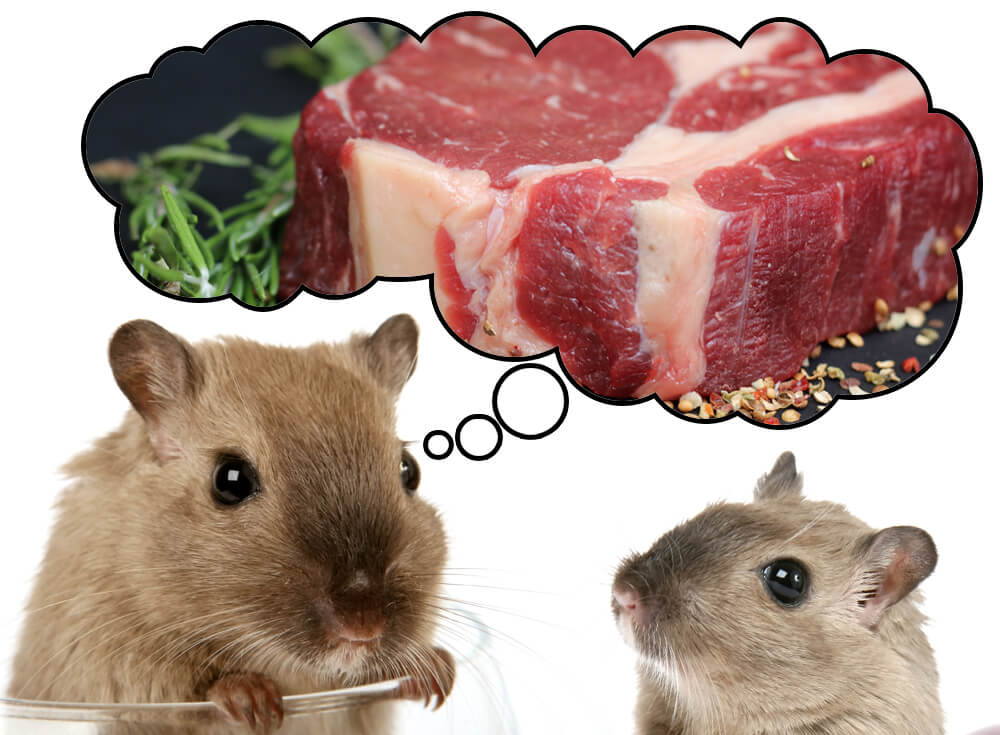
Hamsters vs. meat
Wild hamsters usually dine on grasses, grains, and seeds. However, they also eat insects such as locusts and crickets; grubs (or larvae) such as mealworms; and tiny worms. Meat is an excellent source of protein.
Domestic hamsters aren’t that much different from their wilder cousins. Keeping them healthy therefore entails giving them a diet whose nutritional content is similar to the wild hamster’s diet.
Take note that hamsters can only eat certain types of meat. Giving them meat that’s specifically made for human consumption? That’s a recipe for trouble. So no hotdogs or burgers for Mr. Nibbles!
In addition, meat should only be fed to hamsters occasionally. Hammies don’t even need meat to survive – the nutrients they derive from the flesh of other critters can also be obtained from healthier, non-meat alternatives.
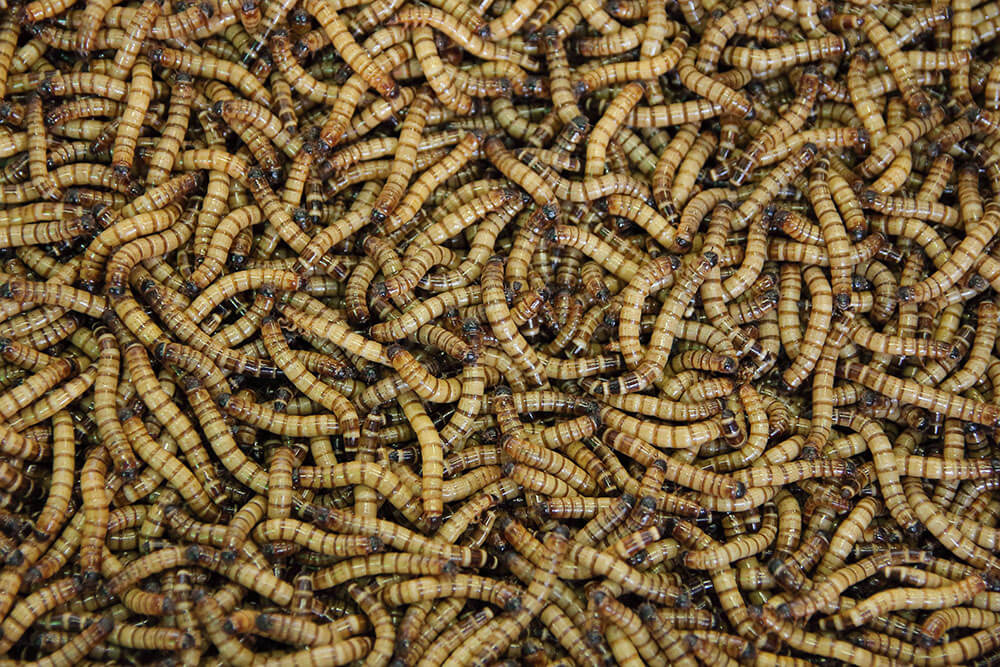
What meat can hamsters eat?
Pet hamsters can eat meat that wild hamsters eat, as well as some meat that humans enjoy.
Insects, grubs, and worms
You can give your pet tiny insects, grubs, and worms – either dried or living.
Dried varieties of these foods are often found packaged and sold in pet stores.
Pet stores also sell live creatures. If you’re not grossed out by the idea of touching living worms or bugs, you can place them in your hamster’s cage or playpen so your pet can “hunt” them down and eat them.
Lean, white meat
You can feed hamsters the white, low-fat meat of chicken, fish, and shrimp.
Because microbes such as salmonella may be present in light-colored meat, a hamster (or person) eating said meat raw can grow seriously ill. You should therefore cook the meat before feeding it to your hamster.
Avoid using seasonings such as pepper, salt, or other spices when cooking the meat. Don’t use oil or fat, either. Boiling the meat is your best option, though baking will also suffice.
Remove any bones from fish; your hamster might choke on them.
Can hamsters eat red meat?
While some sources claim it’s all right to give hamsters beef, pork, and lamb, many others say the opposite.
Technically, hamsters can eat cooked, unseasoned red meat; the food won’t poison them. However, these types of meat are high in saturated fat, which if eaten in excess can make your pet gain an inordinate amount of weight. A chonky hamster may be cute, but unless you want them to become obese, it’s best you feed them red meat rarely and in tiny amounts.
Or better yet, just avoid giving them red meat altogether. Wild hamsters don’t even eat red meat, so why should your pet?
Can hamsters eat canned dog food?
Wet or dry canned dog food is another type of food people have a mixed opinion on. As canned dog food is high in fats, however, we don’t recommend feeding it to your hamster for the same reason as above.
Other types of meat
Unfortunately, there isn’t enough information on whether or not it’s safe for hamsters to eat more “exotic” types of meat. Therefore, seafood such as oysters, clams, squid, and octopus; reptiles including snakes and alligators; and mammals like horses, deer, and bison are best left out of your hamster’s menu.
It’s also best to avoid the meat of bigger birds such as ducks and geese. Cooked, unseasoned turkey is relatively safe as long as it’s fed to your hamster sparingly and in tiny amounts.
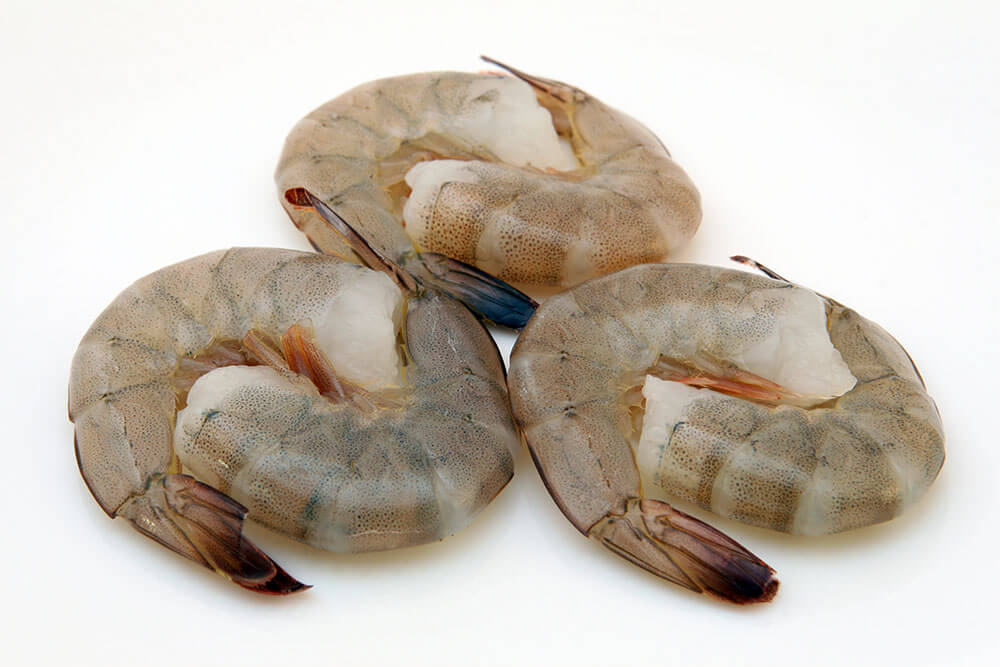
The health benefits of meat
While the consumption of meat isn’t a requirement for pet hamsters to stay healthy, giving them the occasional meaty treat can benefit them in various ways.
Meat is rich in protein
Like all animals, hamsters need protein to survive. Protein not only plays a major role in the development of strong, healthy muscles but also the transportation of oxygen throughout the body; the prevention of infections and illnesses; and the production of energy the body needs to fuel various bodily functions.
Live meals encourage exercise
When you place a living cricket in your hamster’s cage, your hamster will have to catch it before they can eat it. The “hunt” encourages exercise and may even provide entertainment for your hamster. A live meal can therefore benefit your pet not only nutritionally but also physically and mentally.
It introduces variety to your pet’s diet
Like people, hammies can get tired of eating the same foods over and over again. They may even start rejecting food they’ve gotten bored of. This is why pet owners are advised to introduce new edibles to their pet’s diet every once in a while.
Meat used as an occasional treat will add exciting variety to your hamster’s diet. Not only will this prevent boredom but also allow your hamster to obtain essential nutrients meat provides.
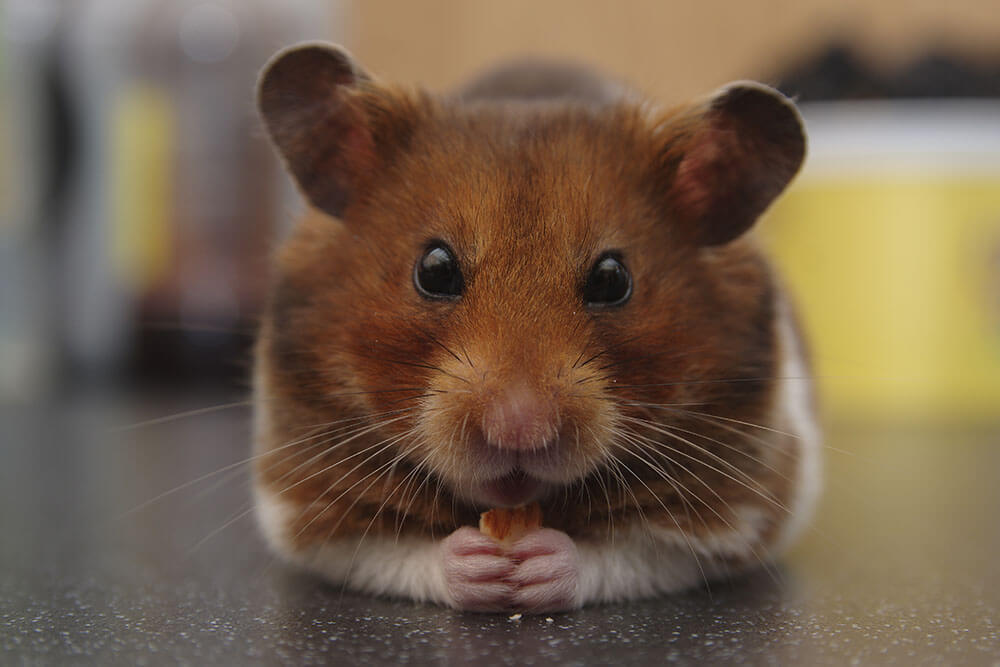
The dangers of meat
Feeding your hamster the wrong meat or too much meat can result in various health issues.
Digestive problems
The hamster’s digestive system has a tough time breaking down some types of meat. Eating the wrong meat can lead to digestive problems, such as stomach pain and diarrhea. Diarrhea, if untreated, can lead to dehydration and even death.
To ensure your hamster doesn’t get ill, stick to feeding them the safe types of meat we described above.
Kidney problems
Because meat is dense in protein, eating meat regularly will lead to an excess of protein in your pet’s body. Too much protein, in turn, can lead to kidney damage and related complications. This is why it’s a bad idea to feed your hamster meat of any sort every day.
Obesity
As previously mentioned, red meat contains more fat than lean, white meat. Frequently feeding your hamster red meat can lead to unnecessary weight gain and possibly even obesity.
Obesity, in turn, can cause serious health risks such as diabetes and heart disease, which if left unmanaged can prove fatal. Obese hamsters, in general, are more likely to die earlier than those within the healthy weight range.
Even feeding lean, white meat to your hamsters can be a problem if done regularly. Meat, in general, has more fat than vegetables, so too much of any kind of meat can be fattening for a hamster.
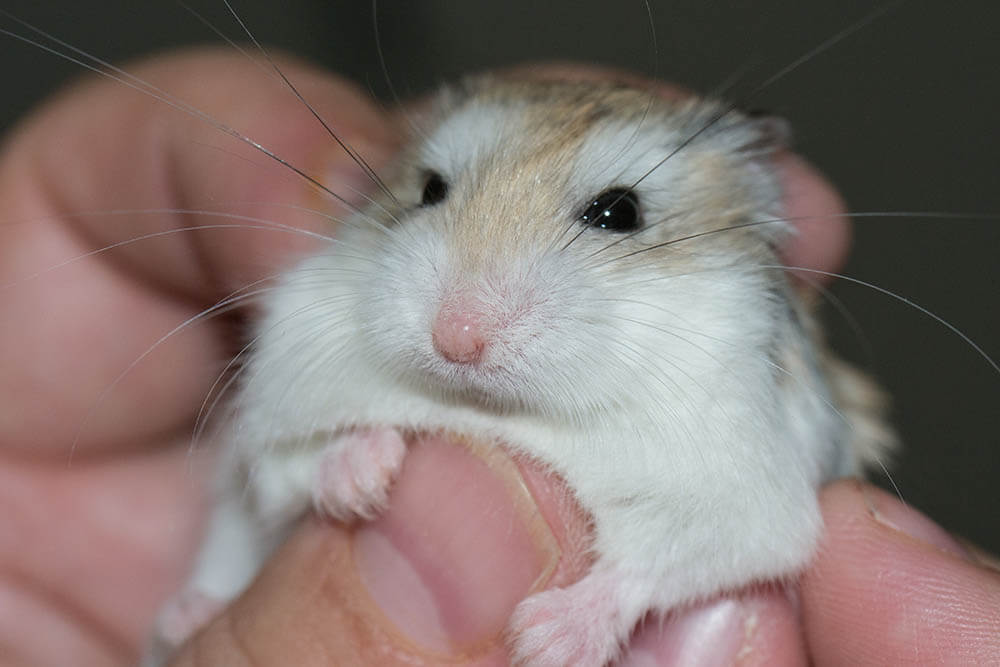
The right way to feed your hamster meat
Meat should never be a regular part of a hamster’s diet. Give your furry friend meat only 2 to 3 times per week.
You can give your hamster a whole insect, grub, or worm as long as it’s small. Pet stores sell such creatures that are the right size for hammies.
If you’re giving your pet chicken, fish, or shrimp, you should chop up the meat into tiny pieces to prevent choking. The serving size should also be small – no bigger than a thumbnail.
It’s best to avoid giving juvenile hamsters meat, as they may not be able to digest it properly. Only adult hamsters can eat meat safely.
In conclusion…
True, hamsters can eat meat. But can they eat any type of meat? No. Should they eat meat as a regular part of their diet? Definitely not!
So make sure you feed your hamster the right types of meat and to use such meat as an occasional treat only. This way, you’ll be ensuring that your hamster stays both healthy and happy.
